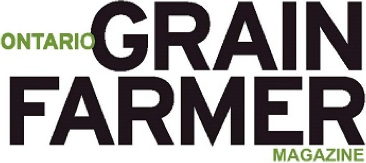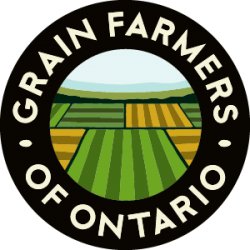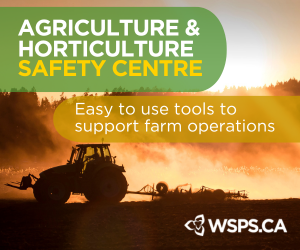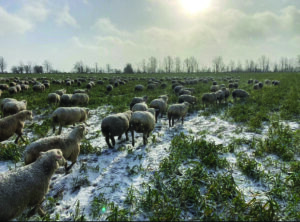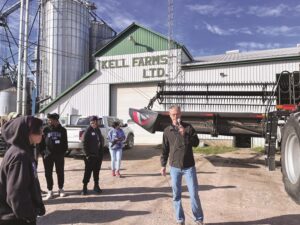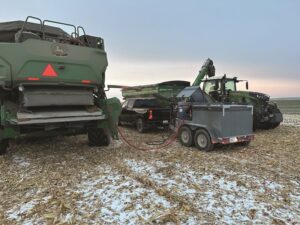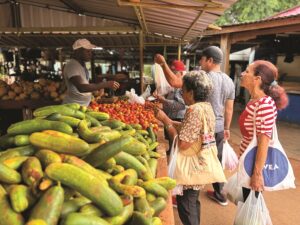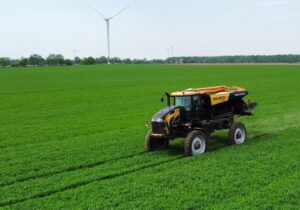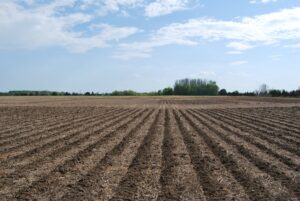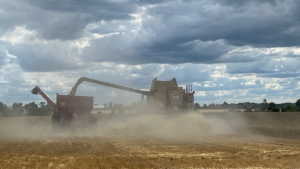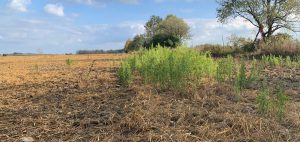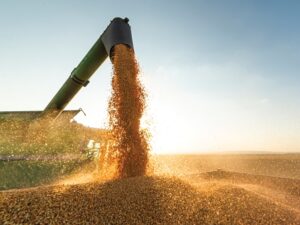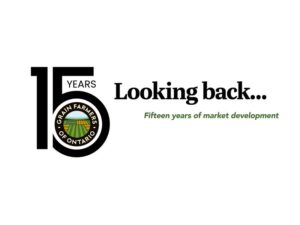Market development always a work in progress
Building an international customer base

Contrary to current proclamations about protecting Canadian sovereignty, George Morris’s comment rings true, even today. Market development for Canadian agricultural commodities continues, but trade talk often revolves around breaking ties with the U.S. or China, and “finding our own way” with other countries.
However, the messaging about global trade ignores historical and economic realities: free or liberalized trade has been part of the agri-food landscape in Canada for decades. Trying to change that is counterproductive and prone to failure due to its evolution.
Since last March, media outlets, social media and consumers have been calling for new trading partners and counter-tariffs against the U.S., as if they’re new concepts or that trade with Canada’s closest geographical partner is treasonous. Neither is true. Instead, market development is and has been a prominent focus for the agri-food industry, including the Grain Farmers of Ontario, Cereals Canada and Soy Canada.
For Dana Dickerson, the first step is acknowledging that there is no replacing the U.S. – or China. In spite of spirited “elbows up” references, Dickerson contends all sectors of Canadian agriculture must maintain trade with those two markets, even if it requires an exhaustive level of detail.
“We do a lot of work in understanding our productive capacity,” says Dickerson, Grain Farmers of Ontario’s’s director of market development and sustainability. “We keep an eye on what volumes are produced every year, the plantings, the shifts between the acreage of different classes of wheat or IP beans versus commodity beans. We understand the quality attributes for those grains in which quality is a decisive factor when it comes to sourcing or maximizing use of the grains.”
A COLLABORATIVE EFFORT
What sets market development in Canada apart from other jurisdictions are efforts among different commodities and their provincial and national grower organizations. Nationally, Cereals Canada and Soy Canada represent wheat and soybean valuechains, respectively, including Ontario growers through the Grain Farmers of Ontario membership in those organizations. The collaborative effort amongst these groups lends itself to continued diligence where market development is concerned.
For instance, Grain Farmers of Ontario conducts an annual wheat harvest survey across all four of its classes, with intensive milling and baking tests. It brings that insight to domestic millers – to compare what they’re seeing at their mills – and then in tandem with Cereals Canada, works to promote those quality insights to international millers to try to build new demand in an attempt to create new markets.
Soy Canada runs a quality lab in conjunction with the Canadian Grain Commision. Grain Farmers of Ontario supports with funding and participates in Soy Canada’s trade missions. Ontario growers benefit from insights garnered from those missions, including demands of Japanese markets or work with researchers and plant breeders.
“We tend to punch above our weight as a provincial group and we’re very involved in international market development work,” says Dickerson. “Part of it is because we’re the largest production region for soy, so we’re very involved with Soy Canada. We only grow about eight per cent of Canada’s wheat but 85 per cent of Canada’s winter wheat, so we’re engaged in helping Cereals Canada promote that class.”
Ontario’s also the largest production region for corn with more than 60 per cent of the country’s crop. Although there’s Soy Canada, there isn’t a Corn Canada, and corn doesn’t fall under Cereals Canada. “We do a lot of leadership with corn and promote its priorities and support market development issues.” It’s a lot of engagement with trade missions abroad: Dickerson notes there have been ongoing efforts to maintain wheat milling with Mexico plus recent initiatives with Europe, Ecuador, Columbia, the Dominican Republic and Nigeria, now Ontario’s fourth largest export market. Then there are similar missions – inbound and outbound – with Japan, Taiwan and China for soybeans. Some buyers are interested in commodity beans at the lowest prices while others, like Japan, have specific quality and culture-related standards.
A ‘GREAT NEWS’ STORY
As attractive as those far-flung markets and buyers may seem, the U.S. remains an important market for Canada and particularly for Ontario, something Josh Boersen understands. A farmer from the Stratford area, District 9 (Perth) director and a board member with Cereals Canada, Boersen agrees with Dickerson’s view that the
U.S. remains a vital trading partner and history leans towards maintaining that status.
A research paper from Dalhousie University in June 2025 underscored that value, with bilateral trade in agri-food with the U.S. worth $72.6 billion in 2023 – roughly $1.4 billion per week.
“We’re beholden to what happens there,” he adds. “With cereals, there is a bigger concern, especially for Ontario. There might be secondary markets in Mexico and recently we’ve been doing more missions into Latin America and Mexico specifically to highlight our cereals and target those markets, and there’s good reception for our products.”
On the other hand, he notes that what took 50 years to build is not going to shift significantly in the short term. The best Ontario agriculture can do is continue to build those trade opportunities. But like it or not, geography is either this province’s greatest ally or weakness, especially considering the cost of shipping grains internationally. As Boersen notes, agribusiness trade was going on long before Trump came to power and it will continue to go on long after he’s gone.
As enticing an idea as increasing export opportunities or domestic demand for commodities grown in Ontario may be, there’s also the question of protecting access to those markets. That includes competing interests globally, “unscientific perspectives” (mostly among consumers) or regulations that don’t account for modern agricultural practices. Trying to build upon where the market has been and where and how it will develop within the current global environment is a noble cause. But Boersen offers a reminder that as Ontario produces more commodities, the onus is on the industry to find them a home.
“I maintain the perspective that a rising tide raises all ships and expanding Canada’s brand globally – whether from Ontario’s perspective or from Canada’s – is going to benefit Canadian agriculture,” he says. “We can’t silo ourselves from the national interests just because we have unique products in Ontario, especially with soft red winter wheat.”
Nor are tariffs or other trade actions unique to the U.S. The European Union and the United Kingdom had a significant tariff on Canadian soft red wheat – until recently. That was resolved via the Comprehensive Economic and Trade Agreement (CETA) between Canada and the EU and the Canada-UK Trade Continuity Agreement. In the past couple of years, Ontario wheat has begun shipping to the UK and southern Europe, primarily for feed purposes.
MIXED MESSAGING
For the soybean industry in Canada, market development is also not a new concept but something that predates the formation of Soy Canada in 2014. It’s now a key part of the organization’s mandate to support the industry, whether from the vantage point of its exporter members or its value-chain customers.
But balancing stakeholder concerns is also challenged by information that isn’t always accurate. For instance, Brian Innes states that any Canadian goods covered in the Canada-U.S.-Mexico trade agreement do not have tariffs applied to them, including soy and soy products.
“The largest uncertainties affecting Canadian soy are what the U.S.-China relationship is and what that means for U.S. soy exports to China,” says Innes, executive director of Soy Canada, adding that the U.S. is pressuring international customers. “As the largest economy in the world, the U.S. has a unique position which allows it to impose its will on others.”
On a recent mission to Indonesia, Innes met customers who had signed agreements to increase purchases of U.S. soy and agri-food products. The impact of the agreements is not yet known but if followed, they would require more purchases of U.S. soy and consequently, less Canadian soy.
In spite of such a looming threat, all stakeholders in Canada’s soybean sector are involved in a long-term view of building value. The market development efforts of Soy Canada revolve around three key elements: assist the value chain in communicating with customers, promote Canadian soybeans and create opportunities for members to grow soybean exports.
“In promoting Canadian soybeans, we connect our value chain with our customers, helping to increase understanding and ultimately increase the value our customers see from Canadian soybeans,” says Innes. “We serve the needs of our members and the industry, including commodity and food-grade soybeans. When market disruptions occur, product continues to flow from origin to destination – it’s just that disruptions change who trades with whom and for what value.”
Soy Canada’s market development work helps to create a resilient reputation for Canadian soybeans so that regardless of what disruptions may occur, customers will continue to value the product.
“The recent U.S. disregard for its trade commitments is injecting significant doubts about their reliability in our customers’ minds,” says Innes. “Yet Canada is a trusted supplier for our customers and this is something that’s resonating, now more than ever.” •
